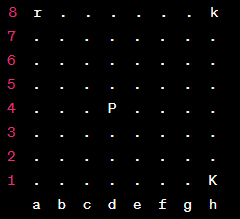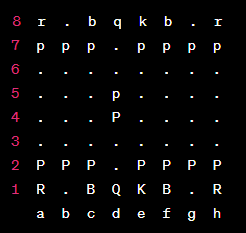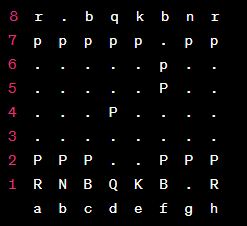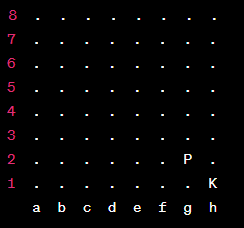Key Concepts and Strategies in Chess | Chess Tutorial Course: Beginner to Advanced - Class 6 PDF Download
| Table of contents |

|
| Calculation in Chess |

|
| Centering in Chess |

|
| Space in Chess |

|
| Tempo in Chess |

|
| Legal & Illegal Moves |

|
| Handicapping in Chess |

|
| Pawn Promotion |

|
| Gambit |

|
| Zugzwang |

|
Chess is a game of strategy and intellect, where players engage in a battle of wits on a checkered board. To become a skilled chess player, it is essential to grasp key concepts and strategies that can enhance your gameplay. In this article, we will explore several fundamental concepts in chess and provide easy-to-understand explanations along with multiple examples.
Calculation in Chess
Calculation is the process of analyzing possible moves and their consequences. It involves visualizing future positions and assessing the potential outcomes. Calculating moves helps players make informed decisions and anticipate their opponent's responses. For instance, let's consider the following position: In this position, White has a pawn on e4, which can capture the black king if it moves to e5. However, after calculating, White realizes that if they play 1.e5, Black can respond with 1...Re8, putting the white king in check. Hence, calculation helps White avoid a potentially unfavorable outcome.
In this position, White has a pawn on e4, which can capture the black king if it moves to e5. However, after calculating, White realizes that if they play 1.e5, Black can respond with 1...Re8, putting the white king in check. Hence, calculation helps White avoid a potentially unfavorable outcome.
Centering in Chess
Centering refers to controlling and occupying the central squares of the chessboard. The center (d4, d5, e4, e5) is strategically significant because it provides greater mobility and influence over the board. By placing pieces in the center, players can exert pressure on their opponent's position and launch attacks from a strong vantage point. Consider this starting position:
In this position, White can gain control of the center by playing 1.e4, which opens up lines for both the queen and bishop. This move establishes a solid foundation for future maneuvers.
Space in Chess
Space refers to the number of squares a player's pieces occupy on the board. It represents a player's influence and freedom of movement. By maximizing space, players restrict their opponent's options and limit the mobility of their pieces. Let's examine the following position:

Here, White has more space due to the advanced pawn on e5. This pawn restricts Black's pawn on d7, limiting its ability to advance. White can use this spatial advantage to launch an attack and create favorable positions for their pieces.
Tempo in Chess
Tempo, also known as "time," refers to gaining an advantageous move or taking advantage of an opponent's wasted move. In chess, time is crucial as it allows players to execute their plans more efficiently. A wasted move by the opponent gives the player an extra move to improve their position. Consider the following example:
In this position, Black can gain tempo by playing 1...e5. After White plays 2.Nf3, Black can play 2...Nc6, attacking the white pawn on e5. Black has effectively gained an extra move to develop their knight while simultaneously putting pressure on White's position.
Legal & Illegal Moves
Understanding legal and illegal moves is fundamental in chess. Legal moves are those that follow the rules and restrictions of the game. For instance, pawns move forward, capturing diagonally, while bishops move diagonally, rooks move horizontally or vertically, and knights move in an L-shaped pattern. On the other hand, illegal moves violate the rules of chess, such as moving a piece beyond its allowed range or making two moves in a row.
Handicapping in Chess
Handicapping is a practice in chess where a stronger player intentionally gives up certain advantages to level the playing field. For example, a stronger player might remove one or more pawns from their side or agree to start the game with fewer pieces. Handicapping allows players of different skill levels to compete on a more equal footing, enhancing the enjoyment and learning experience.
Pawn Promotion
Pawn promotion occurs when a pawn reaches the opposite end of the board, where it can be promoted to any other piece except a king. Upon promotion, the pawn transforms into a more powerful piece, such as a queen, rook, bishop, or knight. Promoting a pawn can drastically change the dynamics of the game. Here's an illustration:
In this position, White's pawn on g7 can be promoted if it reaches the eighth rank. Suppose White promotes the pawn to a queen with 1.g8=Q. The newly promoted queen can now exert significant influence over the board, contributing to White's advantage.
Gambit
A gambit is a chess opening strategy where a player sacrifices material, usually a pawn, in exchange for a positional or tactical advantage. Gambits aim to disrupt the opponent's plans and seize control of the center. The most famous gambit is the Queen's Gambit, where White offers a pawn on d4. By accepting the gambit, Black gains the material advantage but allows White to establish a strong position. Gambits require precise calculation and strategic planning.
Zugzwang
Zugzwang is a German term used in chess to describe a situation where any move a player makes weakens their position. It occurs when a player is forced to move but all available moves lead to a disadvantageous outcome. Zugzwang often arises in the endgame, where a single move can significantly alter the balance of power. It requires careful maneuvering to navigate zugzwang and avoid falling into a disadvantageous position.
By understanding these key concepts and strategies in chess, beginners can develop a solid foundation for their gameplay. Remember, practice and experience are vital for improving your skills. So, grab a chessboard, apply these concepts, and embark on your journey to becoming a formidable chess player.

|
45 videos|14 docs|5 tests
|
FAQs on Key Concepts and Strategies in Chess - Chess Tutorial Course: Beginner to Advanced - Class 6
| 1. What is the importance of centering in chess? |  |
| 2. How does tempo affect the outcome of a chess game? |  |
| 3. What are the rules regarding legal and illegal moves in chess? |  |
| 4. What is pawn promotion and how does it work? |  |
| 5. What is a gambit, and when should it be used in chess? |  |















